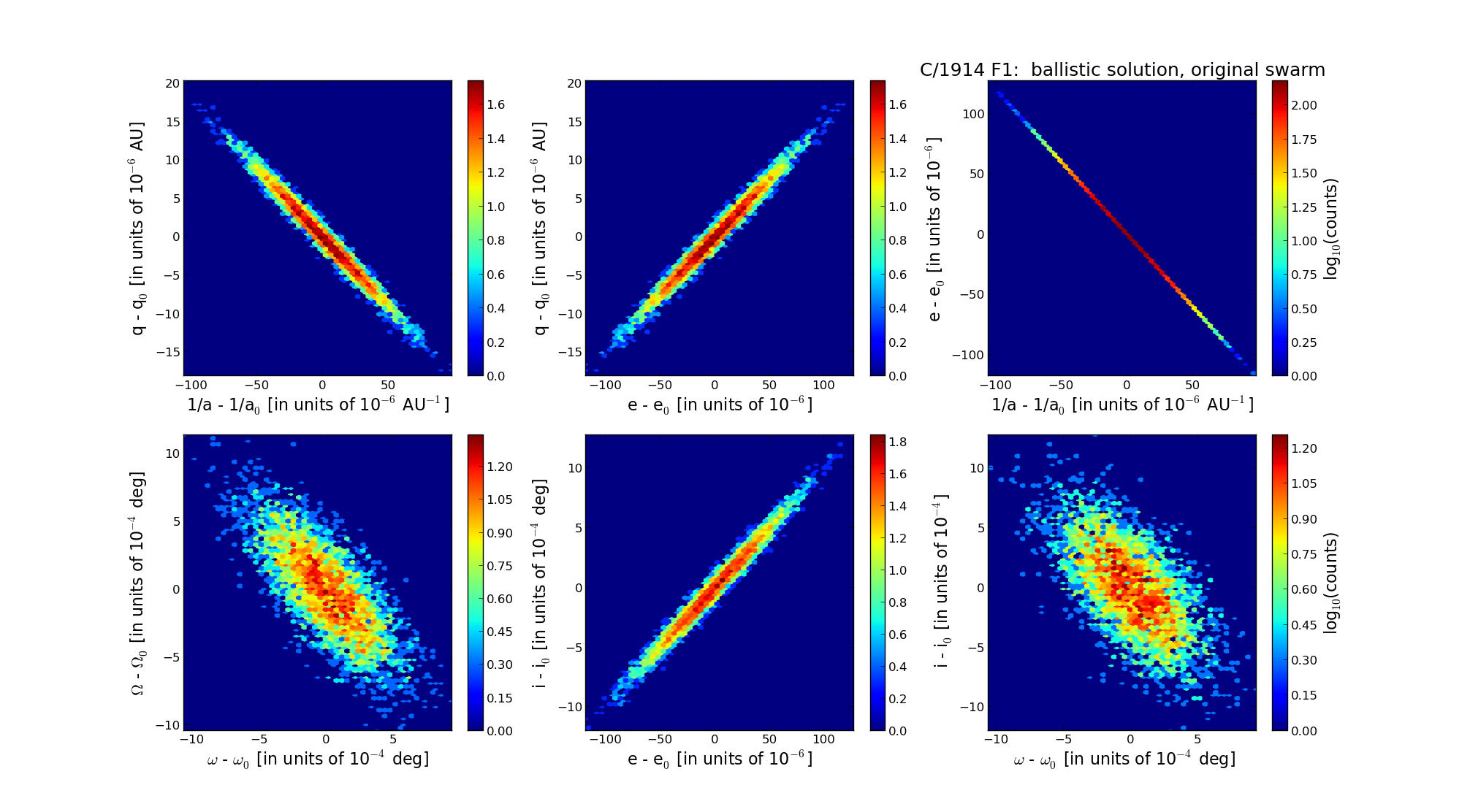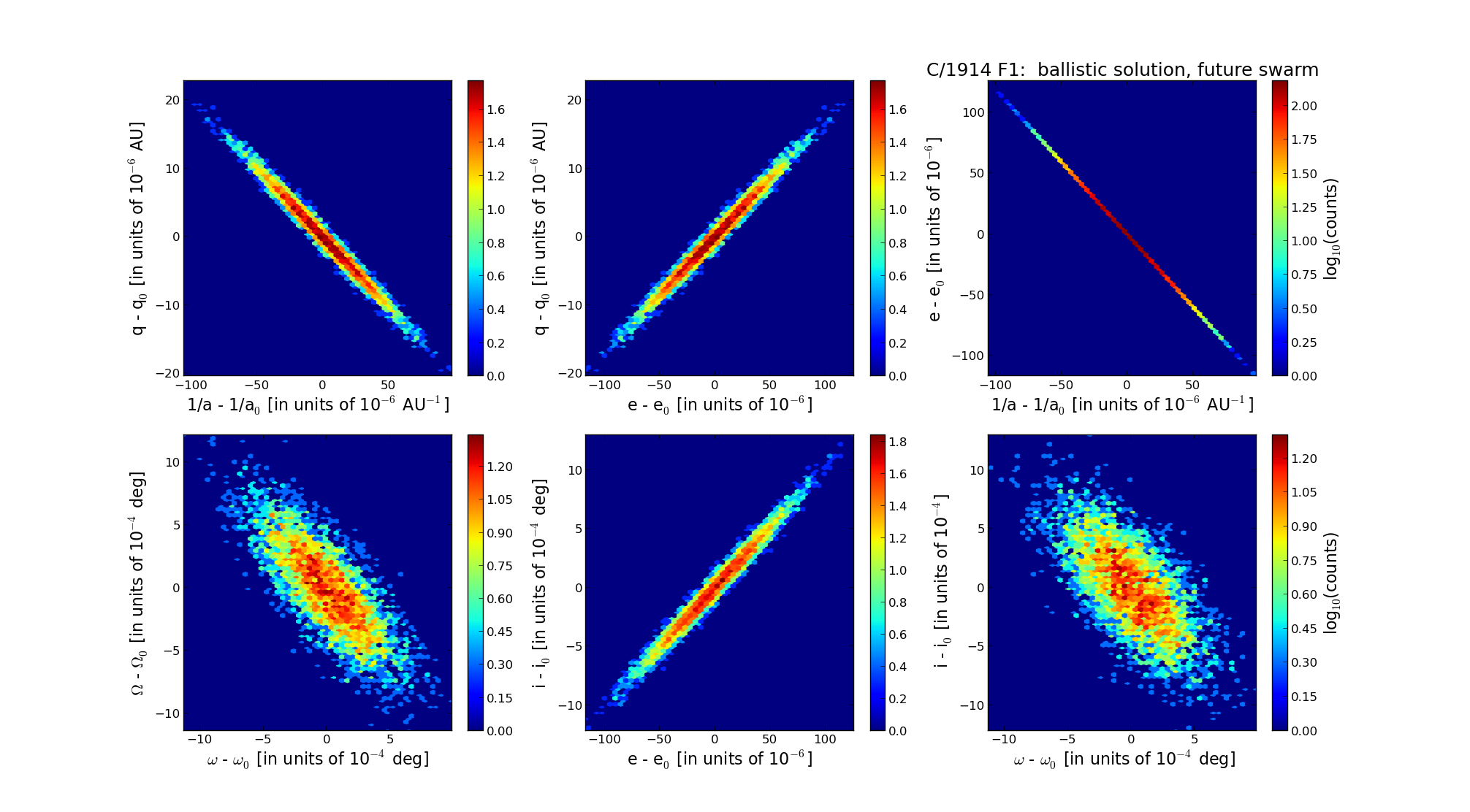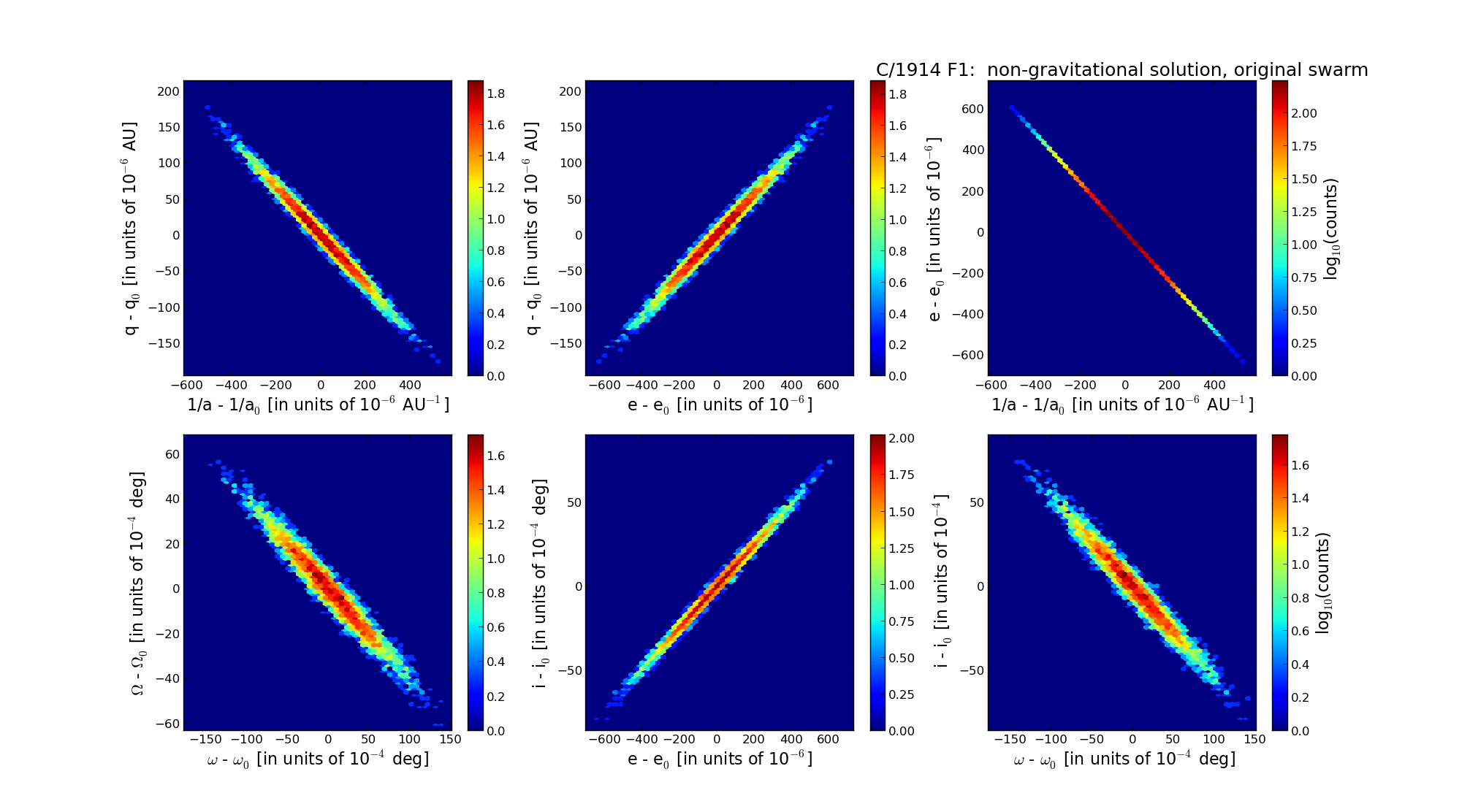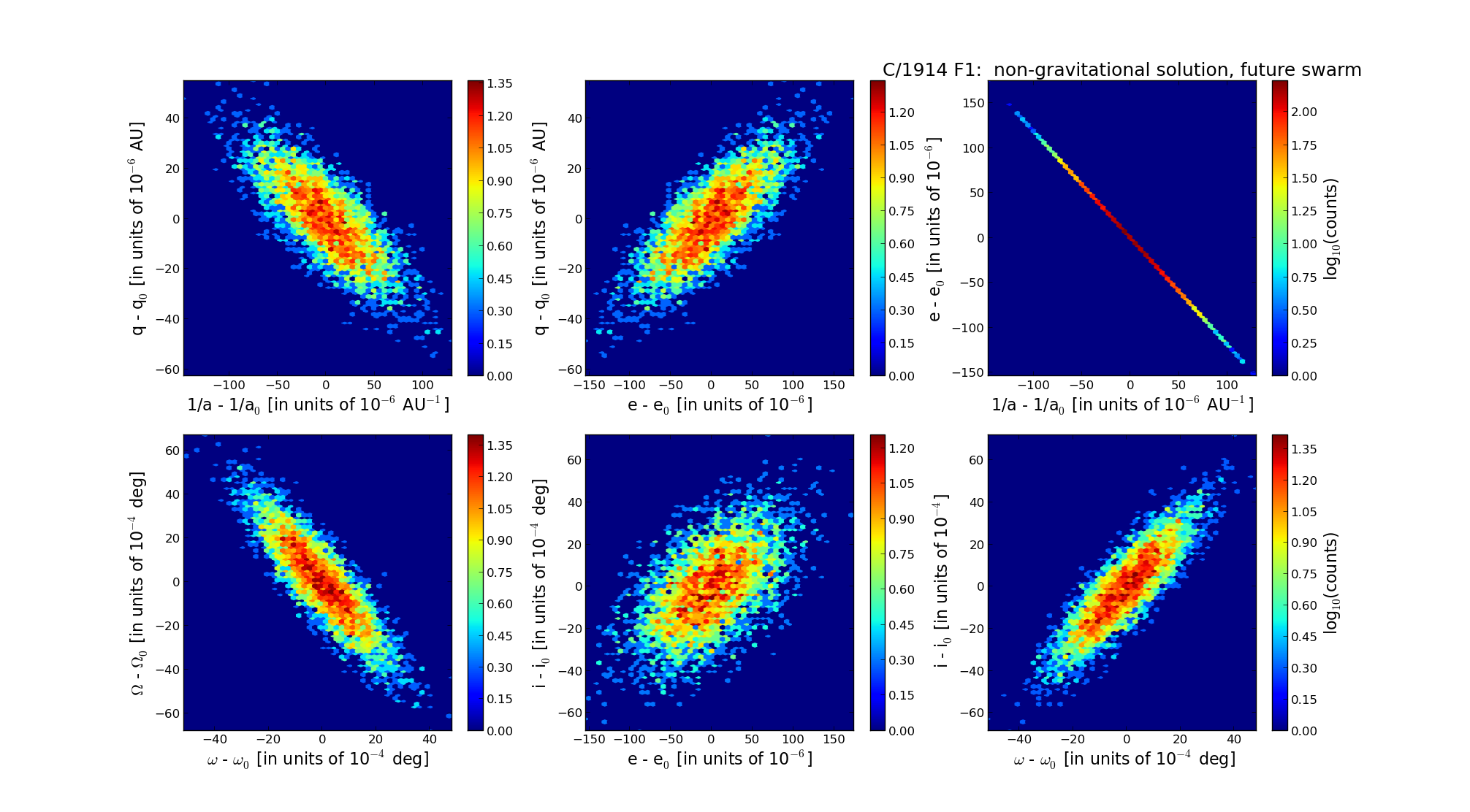| Solar System Dynamics & Planetology Group |
 |
C/1914 F1 Kritzinger |  |
| Solar System Dynamics & Planetology Group |
 |
C/1914 F1 Kritzinger |  |
| number of observations | 285 |
| number of residuals | 517 |
| data interval | 1914 Mar. 30 — 1914 Dec. 14 |
| rms [arcsec] | 3.33 |
| orbit quality class | 2a |
| Epoch (TT) | 19140528.0 | = JD 2420280.5 |
| time of perihelion passage (TT) | 19140604.693158 | ± 0.000256 |
| perihelion distance | 1.19853665 | ± 0.00000529 |
| eccentricity | 1.00018867 | ± 0.00003381 |
| argument of perihelion [deg] | 72.224168 | ± 0.000277 |
| longitude of the ascending node [deg] | 200.117415 | ± 0.000322 |
| inclination [deg] | 23.914811 | ± 0.000339 |
| inverse semimajor axis [10-6 au-1] | -157.41 | ± 28.21 |

| Epoch (TT) | 16150425 | |
| time of perihelion passage (TT) | 19140604.671419 | ± 0.000268 |
| perihelion distance | 1.20014864 | ± 0.00000515 |
| eccentricity | 0.99993105 | ± 0.00003410 |
| argument of perihelion [deg] | 72.188980 | ± 0.000265 |
| longitude of the ascending node [deg] | 200.123181 | ± 0.000308 |
| inclination [deg] | 23.910787 | ± 0.000343 |
| inverse semimajor axis [10-6 au-1] | 57.45 | ± 28.41 |

| Epoch (TT) | 22310903 | |
| time of perihelion passage (TT) | 19140605.374133 | ± 0.000210 |
| perihelion distance | 1.18818561 | ± 0.00000581 |
| eccentricity | 0.99822733 | ± 0.00003377 |
| argument of perihelion [deg] | 71.900648 | ± 0.000279 |
| longitude of the ascending node [deg] | 200.113641 | ± 0.000334 |
| inclination [deg] | 23.956594 | ± 0.000349 |
| inverse semimajor axis [10-6 au-1] | 1491.91 | ± 28.43 |
| number of observations | 285 |
| number of residuals | 519 |
| data interval | 1914 Mar. 30 — 1914 Dec. 14 |
| rms [arcsec] | 3.12 |
| orbit quality class | 2a |
| Epoch (TT) | 19140528.0 | = JD 2420280.5 |
| time of perihelion passage (TT) | 19140604.695930 | ± 0.000549 |
| perihelion distance | 1.19844515 | ± 0.00002359 |
| eccentricity | 0.99971941 | ± 0.00012683 |
| argument of perihelion [deg] | 72.225088 | ± 0.000443 |
| longitude of the ascending node [deg] | 200.114528 | ± 0.000812 |
| inclination [deg] | 23.909795 | ± 0.001379 |
| inverse semimajor axis [10-6 au-1] | 234.13 | ± 105.83 |
| Nongravitational parameters [10-8 au/day2] | A1 = 4.834 ± 0.681 | A2 = 4.85 ± 1.19 | A3 = 2.481 ± 0.826 |

| Epoch (TT) | 16081107 | |
| time of perihelion passage (TT) | 19140604.688500 | ± 0.003739 |
| perihelion distance | 1.19991017 | ± 0.00005139 |
| eccentricity | 0.99928025 | ± 0.00018233 |
| argument of perihelion [deg] | 72.209576 | ± 0.004141 |
| longitude of the ascending node [deg] | 200.117596 | ± 0.001699 |
| inclination [deg] | 23.903136 | ± 0.002255 |
| inverse semimajor axis [10-6 au-1] | 599.84 | ± 151.98 |

| Epoch (TT) | 22310506 | |
| time of perihelion passage (TT) | 19140605.383588 | ± 0.002600 |
| perihelion distance | 1.18811153 | ± 0.00001532 |
| eccentricity | 0.99824831 | ± 0.00004474 |
| argument of perihelion [deg] | 71.895811 | ± 0.001262 |
| longitude of the ascending node [deg] | 200.118493 | ± 0.001861 |
| inclination [deg] | 23.950336 | ± 0.001799 |
| inverse semimajor axis [10-6 au-1] | 1474.34 | ± 37.67 |